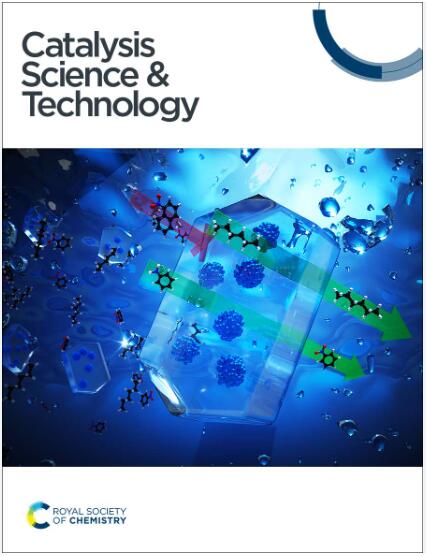Influence of titanium species type in siliceous beta zeolites on their catalytic activity in the process of selective diphenyl sulphide oxidation with hydrogen peroxide
IF 4.4
3区 化学
Q2 CHEMISTRY, PHYSICAL
引用次数: 0
Abstract
Siliceous beta zeolite containing titanium was evaluated as a catalyst for the selective oxidation of diphenyl sulphide (Ph2S) using hydrogen peroxide as the oxidising agent. Various titanium content was introduced into the SiBEA materials with vacant T-atom sites by post-synthetic methods, such as chemical vapour deposition and wet impregnation. Materials with diverse titanium loading were analysed in terms of their chemical composition using inductively coupled plasma optical emission spectrometry (ICP-OES), crystalline structure using X-ray diffraction (XRD), textural properties by low-temperature N2 sorption and surface acidity by ammonia temperature-programmed desorption (NH3-TPD). The form and aggregation of catalytically active species were examined by UV-vis diffuse reflectance spectroscopy (UV-vis DRS). Titanium was incorporated into materials mainly in the form of tetrahedrally coordinated framework cations, except for the TixSiBEA-I samples, where anatase crystallites were identified. All the samples were characterised by high catalytic activity in the studied process. The influence of Ti(iv) framework species on Ph2S oxidation and selectivity towards diphenyl sulphone (Ph2SO2) were analysed and discussed.
硅质沸石中钛种类对过氧化氢选择性氧化二苯基硫化物催化活性的影响
研究了含钛硅质沸石作为过氧化氢选择性氧化硫化氢(Ph2S)的催化剂。通过化学气相沉积和湿浸渍等后合成方法,将不同含量的钛引入到t原子空位的SiBEA材料中。采用电感耦合等离子体发射光谱法(ICP-OES)、x射线衍射法(XRD)、低温氮气吸附法(N2)和氨程序升温解吸法(NH3-TPD)分析了不同钛负载材料的化学成分、晶体结构和表面酸度。利用UV-vis漫反射光谱(UV-vis DRS)研究了催化活性物质的形态和聚集。除了TixSiBEA-I样品中鉴定出锐钛矿晶体外,钛主要以四面体配位框架阳离子的形式掺入材料中。在研究过程中,所有样品都具有较高的催化活性。分析讨论了钛(IV)骨架种类对Ph2S氧化和对二苯砜(Ph2SO2)选择性的影响。
本文章由计算机程序翻译,如有差异,请以英文原文为准。
求助全文
约1分钟内获得全文
求助全文
来源期刊

Catalysis Science & Technology
CHEMISTRY, PHYSICAL-
CiteScore
8.70
自引率
6.00%
发文量
587
审稿时长
1.5 months
期刊介绍:
A multidisciplinary journal focusing on cutting edge research across all fundamental science and technological aspects of catalysis.
Editor-in-chief: Bert Weckhuysen
Impact factor: 5.0
Time to first decision (peer reviewed only): 31 days
 求助内容:
求助内容: 应助结果提醒方式:
应助结果提醒方式:


